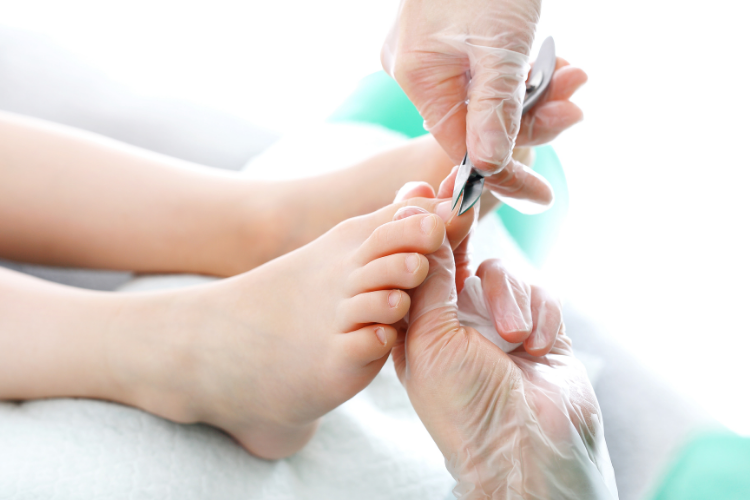
Nail surgery.
Why Might You Need Nail Surgery?
Ingrown toenails usually occur on the big toe, but can occur on any toe. An ingrown toenail can cause pain, inflammation, redness and can lead to an infected toe.
Ingrown toenails can sometimes be managed conservatively e.g. by appropriate nail cutting by our experienced podiatrists. However, if the nail continues to be painful despite our expert nail cutting or if you have an acutely ingrown toenail where there is hyper granulation tissue (extra skin growing secondary to nail piercing the skin) or if the toe is weeping, bleeding or, there is pus present we may suggest nail surgery.
Ingrown toenails are not the only reason why we may suggest nail surgery, if a toenail has become thickened due to trauma (either major trauma, banged the toe) or minor trauma (because the toes claw) and the patient would like a long-term solution rather than regular podiatry (chiropody). We may also suggest nail surgery for a fungal toenail.
When suffering from an ingrown/involuted toenail or even a fungal nail infection, one of the most used treatment options is to remove part or all of the toenail under a local anaesthetic.
The most common causes for needing nail surgery are:
An involuted/ingrown toenail
Foot deformity e.g. bunion
Thickened toenails due to fungal nail infections or trauma
Incorrect cutting of toenails
Tearing of a nail
Tight footwear
Trauma to the nail
The Procedure
Nail surgery is a very quick procedure, but we will need to do a full assessment, including reviewing your medical history and medication with you to check this is the best option for you.
Before undertaking nail surgery we will make the toe numb with local anaesthetic. As much as possible we will undertake a partial nail avulsion, where we remove slithers of nail from the offending side of the toe or both sides if necessary. However, we will advise you if a total nail avulsion (removal of the whole toenail) is the best option. If the nail has been recurrently infected or painful, we would suggest that we put an acid (phenol) on the nail bed to stop the nail regrowing (90-97% successful). Sometimes we/ you may want to allow the nail to regrow e.g. if you feel the ingrown toenail was caused by a one off nail cutting issue or if the nail is fungal, we may remove the nail to decrease the fungal load and then you can treat the skin on the nail bed with an anti-fungal preparation.
Following nail surgery you will not be able to drive home, so please make alternative transport arrangements e.g. a lift or taxi. We will put a large dressing on following surgery, so please bring sandals. If possible we would suggest you rest for a couple of days after nail surgery and then when you are resting at home e.g. watching television we would suggest elevating your feet to aid healing. Most people do not require pain relief after nail surgery, but over the counter analgesics can be taken if required, we would suggest avoiding Aspirin as this can make the surgery site bleed. We would advise you to redress the toe until it heals, for nail avulsions with phenolisation it often takes 2-12 weeks to heal.
